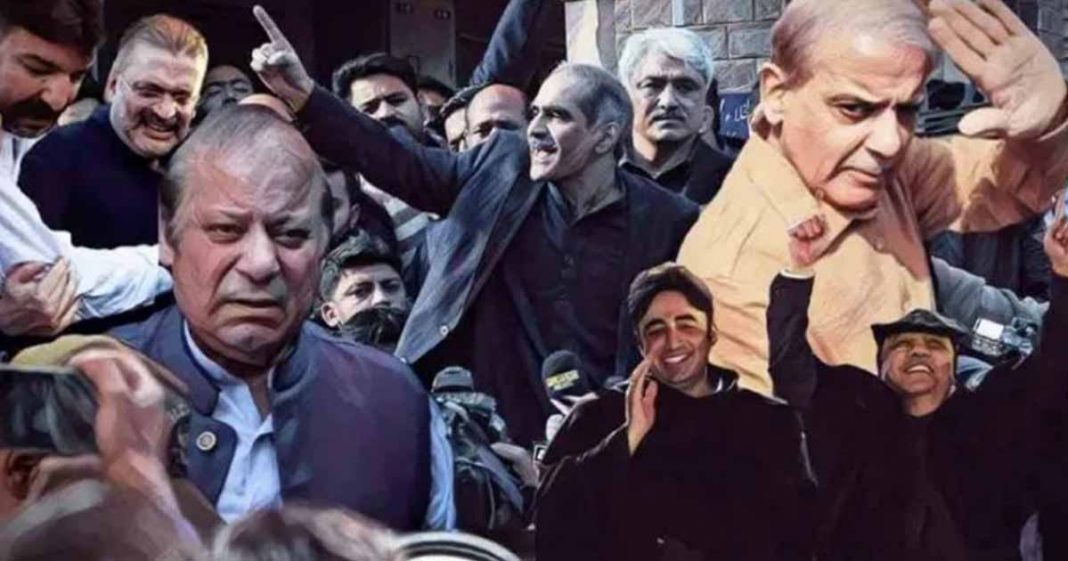The economy of Pakistan has been in a continuous downfall for at least five decades since the first IMF program was injected, except an abbreviated period in the Musharaff era. Along with other narratives including anti-American speeches, Islam cards and calling Indian agents to the adversary, the inflation and worsening economic conditions have been used as tools to build a narrative against the governing party as corrupt, incompetent, and selfish. But this narrative has always been coming back to hunt down the ones who propagated this while sitting on the opposition benches. But none of the political parties took bold actions to develop a deep economy. The Musharaff era was considered better in economic terms, but scholars believe that it was also a shallow economy.
Pakistan is a country of 220 million people which is growing at a higher pace than all European and American countries. The burden on the economy is growing accordingly leading to higher pressure on natural resources and higher imports while exports did not increase as they should have been. The country’s economy was once based on agriculture but now only depends on the remittances received keeping other sources of foreign currencies out of sight including FDI, tourism and industrial production. It eventually creates problems in the balance of payment. This balance of payment is then managed by more loans from the IMF. Even worse, IMF repayments are made by more IMF programs.
Read more: Pakistan Politics: Race to the bottom
The main problem lies in the economic structure of the country
But Pakistan’s political parties have never focused on the fundamental issues. Rather, when one sits in the opposition benches, one starts blaming corruption and incompetence on the government, vehemently without giving time to address the issue. Due to the unstable political structure, deep divide in the country based on ethnonational and ideological differences and continuous interruption, governments focused on short-term solutions instead of taking concrete actions to develop the economic structure. The actions are based on populist views to gain votes in the general election. The governments continuously changed and with this, the blame game cycle also stays in the political narrative building.
Before the 2018 elections, Imran Khan, now the ex-prime minister, blamed the two ruling dynasties for corruption. He used to blame the PPP and PMLN had destroyed the economy by corruption. The depreciation of the rupee, prices hike, and inflation was due to money laundering and corruption. However, during his time in the PM Office, he realized that he did not understand the economic issues, let alone solve the problem. Interestingly, in his era, the united opposition parties held a long march against ravaging inflation. The only successful No-confidence Motion led by PDM was also based on inflation. This time, PDM built a political narrative on the political interests ignoring global inflation, the Russian invasion of Ukraine which led to price hikes in oil eventually aggravating inflation further and disrupting in supply chain globally.
As the newly elected Prime Minister Shahbaz Sharif, who was raising their voice against the inflation a month ago, when took charge of the PM Office, had to make challenging decisions for the economy. He had to raise almost 40% of the oil prices. Now, all the opposition parties have started the same cycle of the blame on the Khan.
The problem is Pakistan’s economy was neither on an upward trajectory nor was built on deep measurements. Globally, economies depend on natural resources such as Saudi Arabia, industrial exports like Japan and USA, tourism like Switzerland, and Foreign Direct Investment like UAE and Singapore.
Pakistan as a state could not decide what kind of economy they want to build
Pakistan imports more than it exports due to which foreign currency reserves shrink rapidly. But Covid-19 exaggerated this shortfall in the balance of payment. Pakistan’s exports could not reach their full potential when a lockdown was imposed during the pandemic. Secondly, the US had the highest inflation in forty years. Eventually, the US had to increase interest rates due to which all currencies fell against the US dollar including the pound and Euro. But, before even the interest rate was increased, the markets reacted on speculation. This time, it was not just the rupee vs Dollar. But the rupee reacted more dovish than major currencies due to political uncertainty and inflation. The fall in the rupee further led to inflation in the country. What is the solution then?
In a few words, the solution lies in long-term policies rather than short-term political gains. Government must change the economic structure of the country. It cannot be done alone by the governing party, in presence of vested political interests and a continuous blame game of corruption. All parties must sit together putting political differences aside for the country.
Read more: Secret of prosperity of dynastic politics in Pakistan
The state must stop the companies who are ready to be flown by offering incentives, bring back those who have already fled and formulate a new industrialization scheme with lucrative packages. This scheme must not focus on Chinese companies or Western companies alone. Rather, it should offer equal opportunities for all. And last but not the least, Pakistan must prepare a skilled workforce and secure opportunities for them in the advanced economies as they have been the main source of remittances. Tourism is one of the least explored avenues. It must be used to its full potential. It’s only possible when Pakistan is first for all political parties and the political narrative building is stopped for the greater good.
The writer is a political analyst and opinion writer. The views expressed in this article are the author’s own and do not necessarily reflect the editorial policy of Global Village Space.














